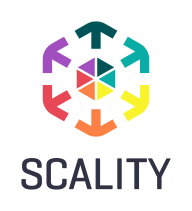


LizardFS and Scality RING are distributed storage systems competing in scalable and reliable data management. Scality RING appears to have an upper hand due to its robust feature set and comprehensive capabilities.
Features: LizardFS offers flexibility and customizability with its open-source nature, along with data redundancy and self-healing capabilities. It provides an efficient support framework. Scality RING supports object and file storage systems, enhancing scalability and enterprise-grade reliability. Its focus on hybrid cloud deployments makes it suitable for large-scale operations, offering impressive redundancy and disaster recovery features.
Ease of Deployment and Customer Service: LizardFS has straightforward deployment options, appealing to environments that require rapid integration and community-driven support that offers valuable assistance. Scality RING provides a sophisticated deployment model tailored for enterprise needs, backed by comprehensive service agreements ensuring strategic support and rapid issue resolution. Scality’s professional services offer convenience for streamlined implementation and maintenance.
Pricing and ROI: LizardFS’s cost-effective setup, driven by its open-source model, offers a favorable ROI for small to medium enterprises focused on lower initial expenditures. Scality RING's enterprise pricing may present higher initial costs but justifies this with enhanced operational savings and efficiency, making it valuable for large-scale, mission-critical environments seeking extensive capabilities and scalability.


FlashBlade is the industry’s most advanced scale-out storage for unstructured data, powered by a modern, massively parallel architecture to consolidate complex data silos (like backup appliances and data lakes) and accelerate tomorrow’s discoveries and insights.
Software Defined Storage LizardFS is a distributed, scalable, fault-tolerant and highly available file system. It allows users to combine disk space located on many servers into a single name space which is visible on Unix-like and Windows systems in the same way as other file systems. SDS LizardFS makes files secure by keeping all the data in many replicas spread over available servers. It can also be used to build space-efficient storage, because it is designed to run on commodity hardware. Disk and server failures are handled transparently without any downtime or loss of data. If storage requirements grow, it's possible to scale an existing SDS LizardFS installation just by adding new servers _ at any time, without any downtime. The system will automatically move some data to newly added servers, because it continuously takes care of balancing disk usage across all connected nodes. Removing servers is just as easy as adding a new one.
Scality RING is the scalable and resilient object storage solution designed for modern workloads, providing seamless data protection against evolving cyber threats.
Scality RING leverages S3 object storage to meet unpredictable demands with a patented MultiScale Architecture that offers limitless scalability across capacity, performance, and more. It delivers end-to-end cyber resilience with CORE5 for ransomware protection, while its cloud-style economics and intuitive management empower enterprises to accelerate AI initiatives and optimize cloud deployments. Its flexibility is ideal for service providers managing extensive data needs.
What are the key features of Scality RING?Scality RING is extensively implemented in backup solutions across industries, supporting platforms like Veeam and CommVault. It aids in storage expansion and management of large data volumes alongside multi-site architectures. While not leading in AI spaces due to performance constraints, there's potential with faster disk support. It's also used in archives, binary lakes, multimedia services, and AI data lakes.
We monitor all Software Defined Storage (SDS) reviews to prevent fraudulent reviews and keep review quality high. We do not post reviews by company employees or direct competitors. We validate each review for authenticity via cross-reference with LinkedIn, and personal follow-up with the reviewer when necessary.